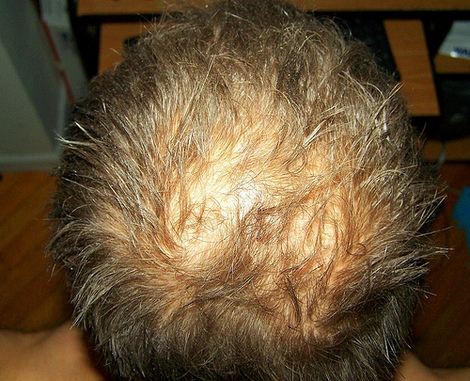Male-Pattern Alopecia Can be Caused by Hyperinsulinemia, Researchers Say

Recently, researches have found that early baldness in men can be caused by a disorder of carbohydrate metabolism, known as insulin resistance. Closely involved in the development of Type 2 diabetes, hypertension, cardio-vascular disease, and other “diseases of civilization”, insulin resistance leads to the condition of hyperinsulinemia and related “sugar metabolism” disorders. Men who suffer from an early onset of alopecia should be warned that their baldness can be closely associated with these potentially serious health problems.
The exact mechanisms connecting male-pattern baldness with insulin resistance still remain unknown, but the association between the two is now obvious to scientists. Early hair loss in men has long been suspected to have links with insulin resistance. A recent clinical study has confirmed that early development of male-pattern alopecia can be a potential clinical marker of carbohydrate metabolism disorders.
The study looked at the connections between early hair loss in men and the development of hyperinsulinemia, insulin resistance, and associated conditions in the male population. The results revealed that the risk of carbohydrate metabolism disorders had a substantial increase in those men who suffered from early-onset alopecia.
The study involved 154 balding men under the age 50, who developed significant male-pattern baldness before the age of 35. The control group of men of the same age did not suffer from early baldness. Researchers collected extensive information about the subjects, including their diagnosed diseases, the use of medications, and fasting blood levels of cholesterol, triglycerides, insulin, and glucose. While measuring their blood composition and medically testing the subjects, researchers examined the parameters usually linked to the risk factors involved in insulin resistance: elevated levels of triglycerides and “bad” cholesterol (or lipid/cholesterol-lowering drugs taken); abnormal “sugar” metabolism (or anti-diabetic drugs taken); obesity or overweight; and hypertension, especially an abnormal increase in systolic blood pressure. As the result, in comparison with men of the control group, men with early alopecia showed almost a five-fold increase in overall risk factors associated with insulin resistance. At the average, they had a two-fold increase in the risk of hyperinsulinemia, elevated blood pressure, and obesity, and a four-fold increase in the risk of elevated cholesterol and blood lipid levels.
The connection between early-onset male-pattern alopecia and hypertension remains obscure, but most researchers think that elevated levels of systolic blood pressure can be involved in the development of both baldness and hyperinsulinemia.
These new findings, published in Lancet, should encourage every man with early hair loss to be screened for risk factors involved in the development of type 2 diabetes and cardiovascular disease. Obese individuals among balding men, especially those with elevated blood pressure, should take urgent steps to lose weight, correct their diet, and get engaged in exercise in order to prevent possible heath complications.
Richard Dunn
Posted on February 13, 2008
Filed Under Hair Loss Reasons
Comments
Leave a Reply
